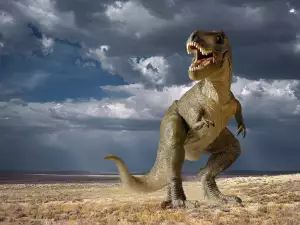A nearly 50-year-old mystery from the world of dinosaurs has finally been solved, report Western media.
In 1965, paleontologists unearthed a pair of huge fossilized dinosaur arms in the Gobi Desert in Mongolia. A whopping 7.9 ft (2.4 m) long, they turned out to be the impressive limbs of a creature that once inhabited our planet and walked on 2 legs.
At that time, the scientists theorized that the fossils belonged to a huge carnivorous beast, but the type of species remained a mystery for 49 years. The mystery was finally worked out after a team of paleontologists came upon another such find.
The owner of the extraordinary frontal limbs has been classified under the species Deinocheirus mirificus. It lived around 70 million years ago in a wide range, where today's Gobi desert is located.
The dinosaur's weight often exceeded 6 tons and its length reached 36 ft (11 m). According to researchers, this magnificent dinosaur was the largest representative of a birdlike group of animals, known to science as ratite dinosaurs.

After the new discovery, the scientists realized that they were wrong about Deinocheirus mirificus. They found that the dinosaur they had labeled as bloodthirsty was in fact a gentle giant with a bill, that fed mostly on plants and small fish.
Based on the new theories by paleontologists, the dinosaur used its long arms to dig for food.
Besides the lengthy arms, Deinocheirus mirificus possessed another distinctive trait - a phenomenal bony sail along its back. Unlike smaller ornithomimosaurs, the owner of the horrifying arms was cumbersome and had a relatively tougher time moving with its short legs.
Deinocheirus mirificus represented a mystery in dinosaur history for almost 50 years, explain researchers of the species, who are bit by bit putting the puzzle together.
The profile of this dinosaur had been formed solely on the basis of the 2 front limbs with terrifying claws, found in 1965, as well as several ribs and shoulder girdles. The new remains however, including more bones and a skull, have helped experts come up with the correct representation of the species.









